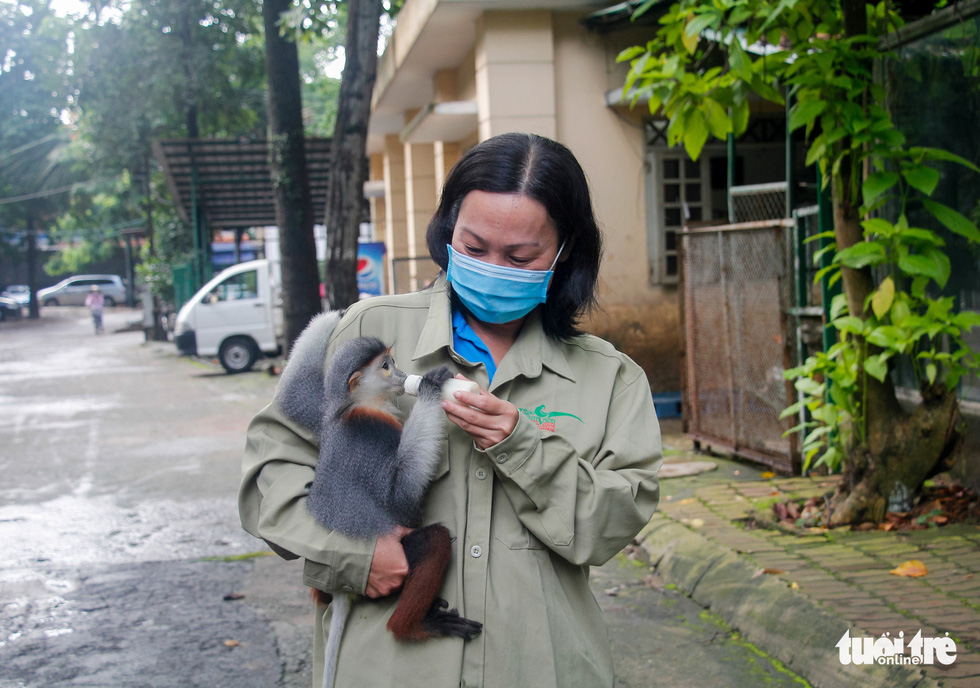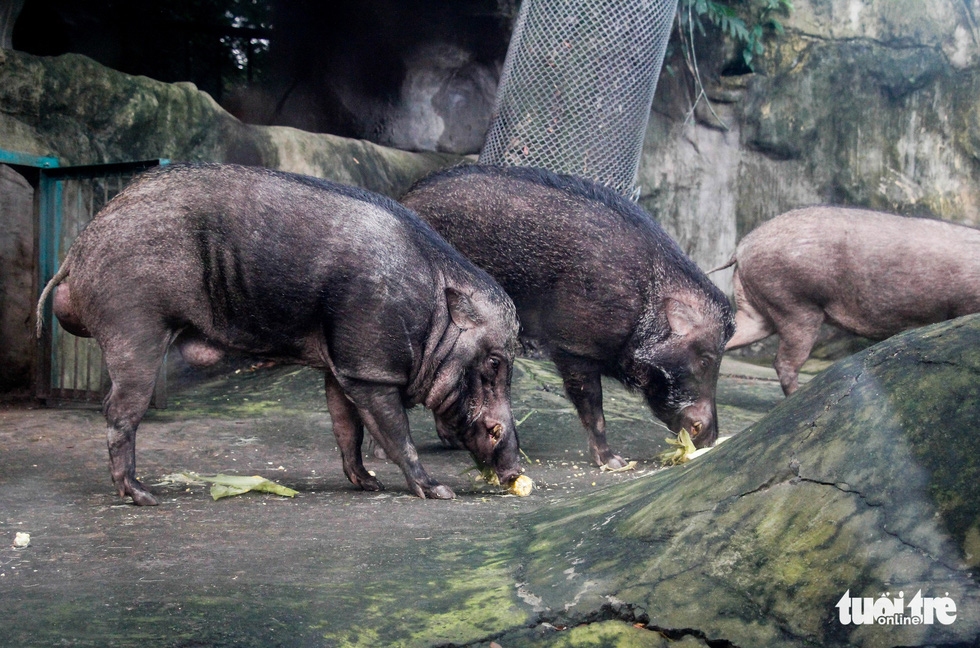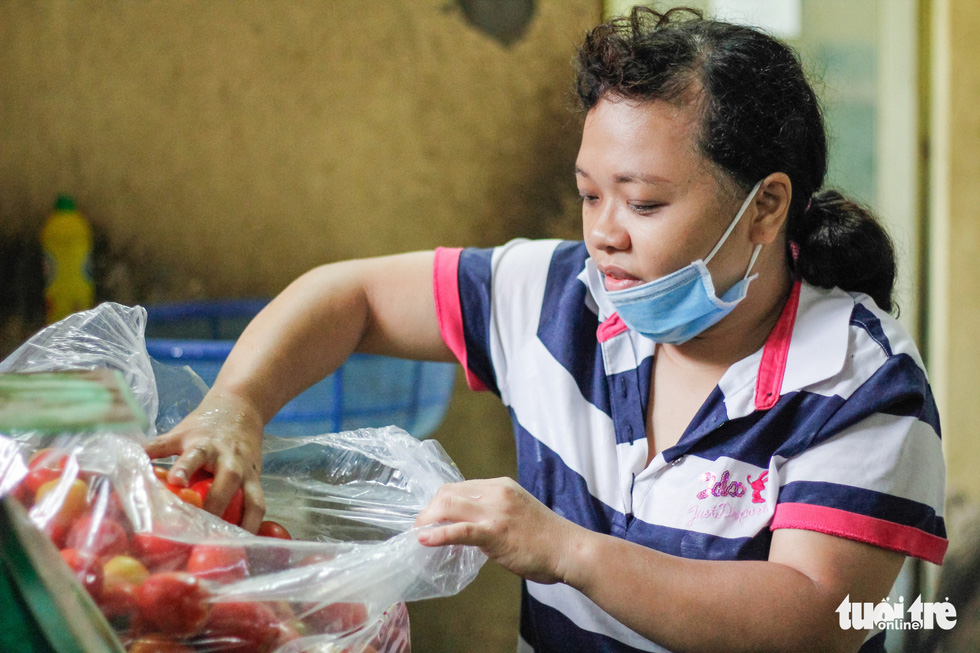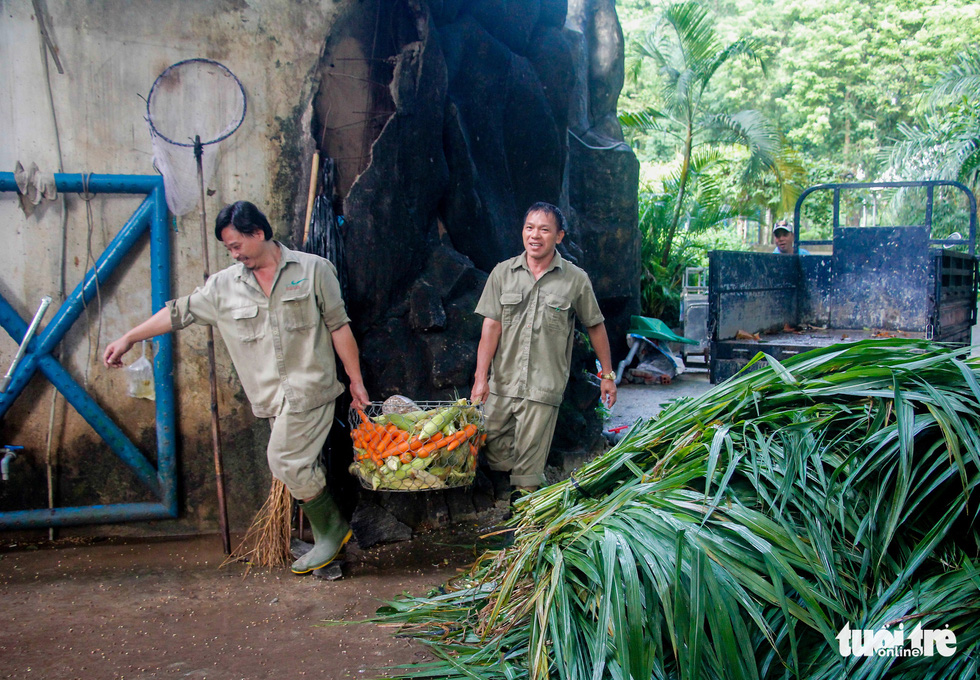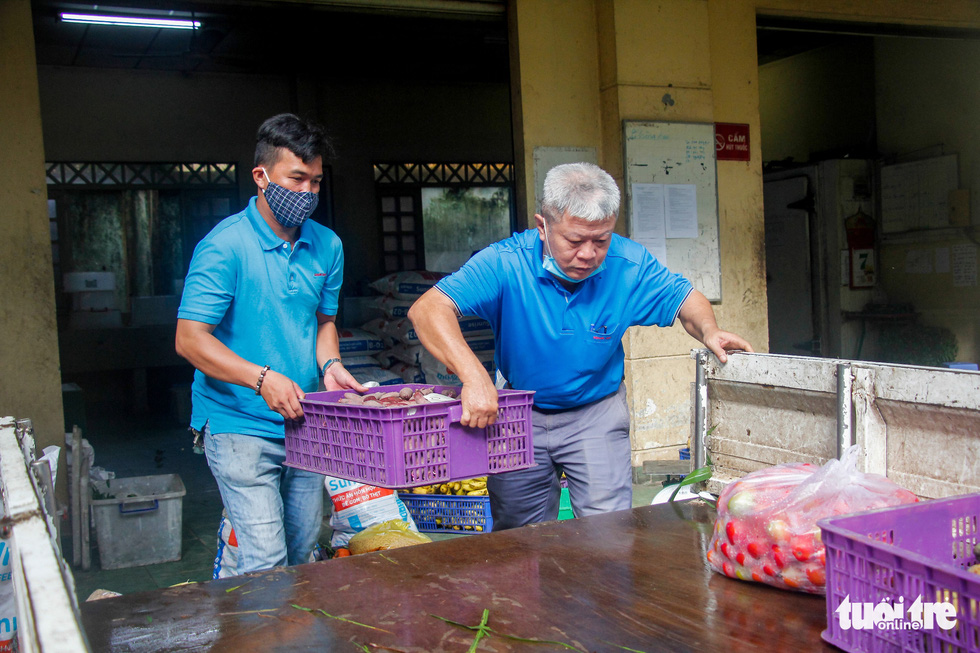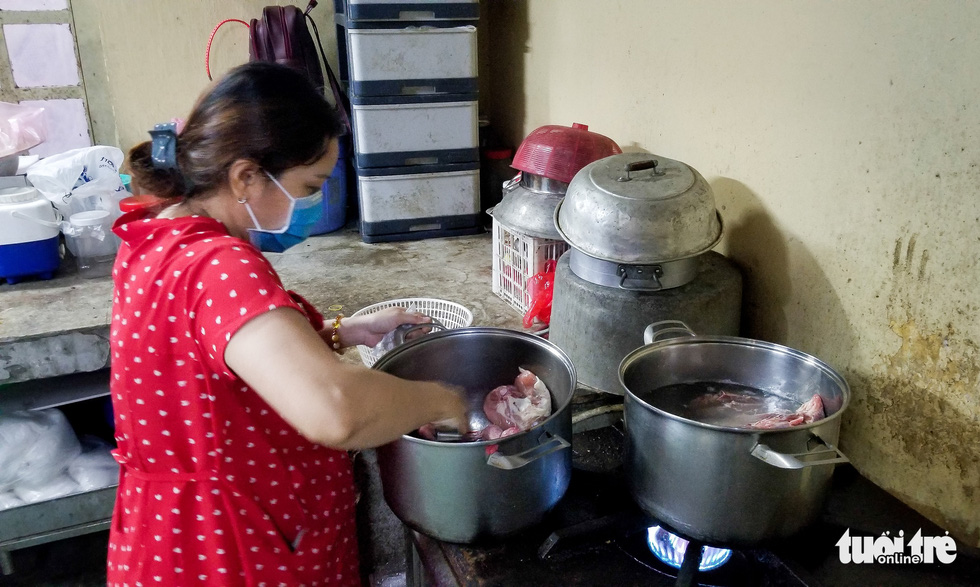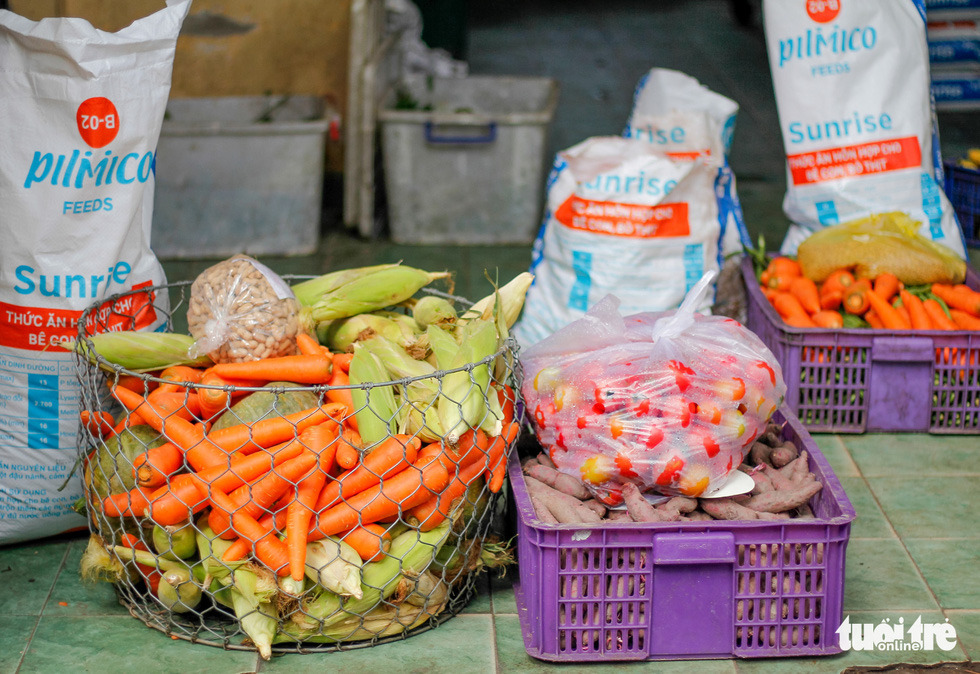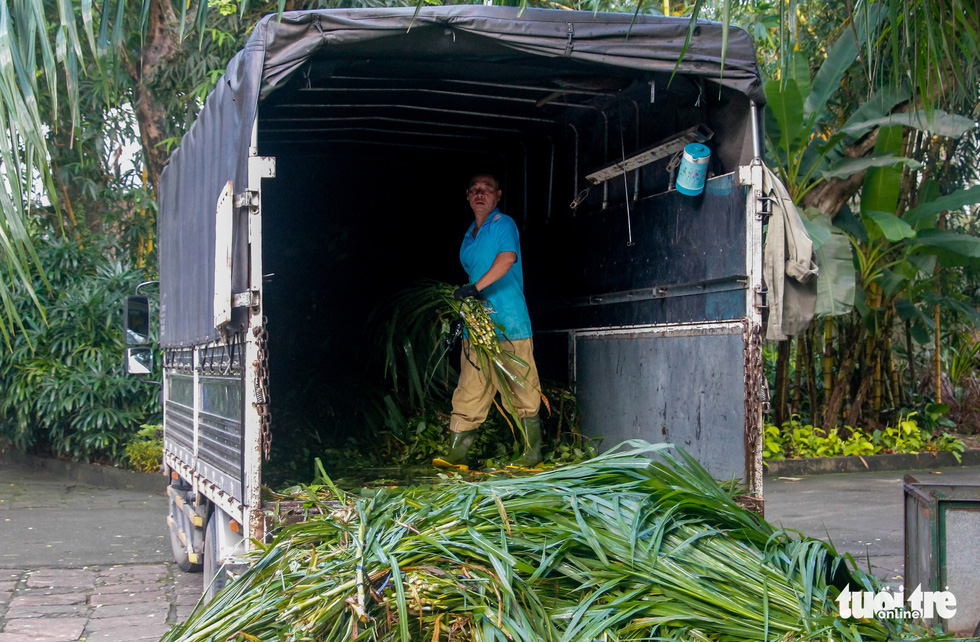Staff at the Saigon Zoo and Botanical Gardens in Ho Chi Minh City has voluntarily donated 30 percent of their salary to buy foods for animals as ticket sales have been hit severely by COVID-19.
Previously, the Vietnam’s oldest zoo reached more than VND330 million (US$14,200) in daily revenue but the amount has been down to VND15 million ($645) over the pandemic.
Meanwhile, it costs around VND5-6 billion ($215,000-258,000) a month to feed and take care of the animals at the place.
However, the zoo has committed to ensure foods for its animals, with almost 300 staff members early this month agreeing to cut down 30 percent of their salary to “overcome this tough time together.”
In a post on its Facebook page on Wednesday, the Saigon Zoo and Botanical Gardens also called for help from the community.
According to the post, the zoo’s staff had done everything they could to ensure the conditions for nearly 1,500 animals at the venue.
The fundraising has received positive feedback and donations and the zoo’s management board came to a decision to stop calling for contributions.
“The Saigon Zoo and Botanical Gardens sincerely extends a thank you to all who have supported us during the past two days,” the zoo said in another Facebook post on Saturday.
“So far, your donations have been quite enough for us to handle our difficulties during COVID-19 time, so the Saigon Zoo and Botanical Gardens’ management board decided to stop calling for contributions,” it added, committing to publish all donations they had pooled.
As noted by Tuoi Tre (Youth) newspaper reporters on Friday, foods including vegetables, meat, and fruits for animals were still guaranteed in quantity and quality at the zoo.
The foods were delivered to the zoo in the early morning before workers processed and classified them as per the animals' diets.
Than Van Ne who is in charge of the food processing factory said the zoo has worked to ensure the foods’ origin and safety.
“Staff will notice what kind of food that the animals prefer and inform us so that we will adjust their diets,” Ne said.
“The animals’ living environment is also designed to be as close to nature as possible,” he added.
At 155 years old, the Saigon Zoo and Botanical Gardens (Thao Cam Vien) in District 1 is the oldest zoo in Vietnam and one of the oldest ones still in operation in the world.
Earlier, the Saigon Zoo and Botanical Gardens was closed for nearly two months from March to May to prevent to spread of COVID-19, and started to admit visitors in July before being hit again by the pandemic.
|
|
| Wild boars are seen at the Saigon Zoo and Botanical Gardens in District 1, Ho Chi Minh City on August 7, 2020. Photo: Chau Tuan / Tuoi Tre |
|
|
| A staff member checks on foods before processing them to feed animals at the Saigon Zoo and Botanical Gardens in District 1, Ho Chi Minh City on August 7, 2020. Photo: Le Phan / Tuoi Tre |
|
|
| Two staff members carry foods into elephant areas at the Saigon Zoo and Botanical Gardens in District 1, Ho Chi Minh City on August 7, 2020. Photo: Le Phan / Tuoi Tre |
|
|
| Two staff members load foods onto a vehicle before transporting them to animal areas at the Saigon Zoo and Botanical Gardens in District 1, Ho Chi Minh City on August 7, 2020. Photo: Le Phan / Tuoi Tre |
|
|
| A staff member processes foods for animals at the Saigon Zoo and Botanical Gardens in District 1, Ho Chi Minh City on August 7, 2020. Photo: Chau Tuan / Tuoi Tre |
|
|
| Fresh vegetables are prepared for animals at the Saigon Zoo and Botanical Gardens in District 1, Ho Chi Minh City on August 7, 2020. Photo: Chau Tuan / Tuoi Tre |
|
|
| A staff member unloads grass for graminivores at the Saigon Zoo and Botanical Gardens in District 1, Ho Chi Minh City on August 7, 2020. Photo: Chau Tuan/ Tuoi Tre |
After 99 days of no documented COVID-19 community transmission, Vietnam recorded its first locally-transmitted case in Da Nang on July 25.
As of Sunday morning, Vietnam’s COVID-19 tally has reached 812, with 395 having recovered and 10 fatalities.
Like us on Facebook or follow us on Twitter to get the latest news about Vietnam!



